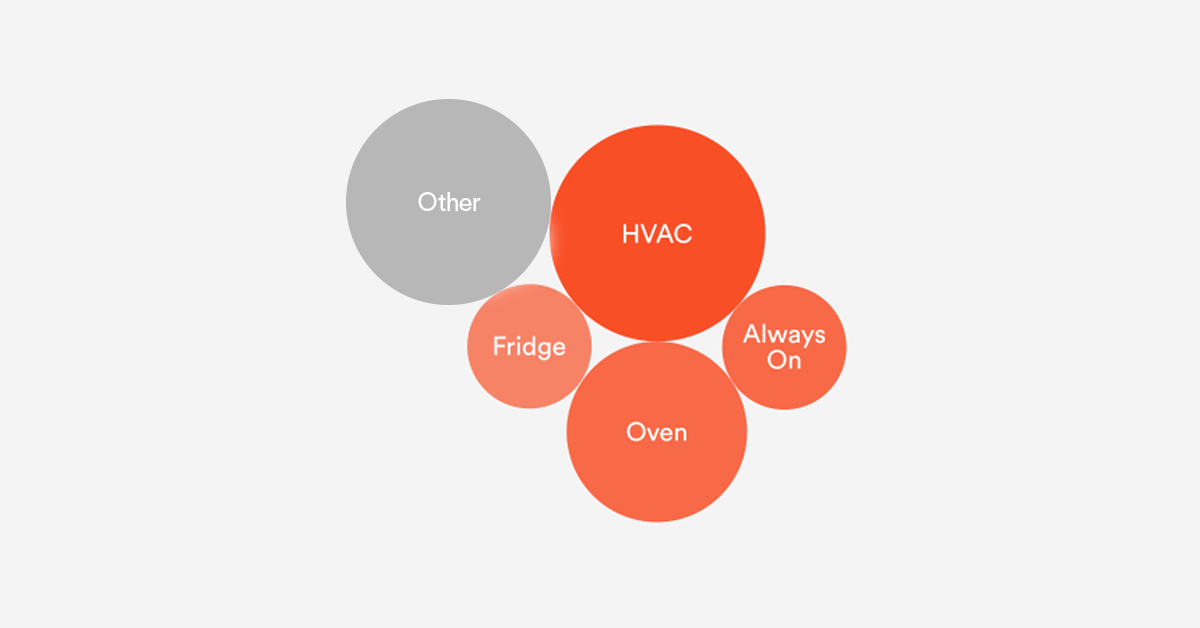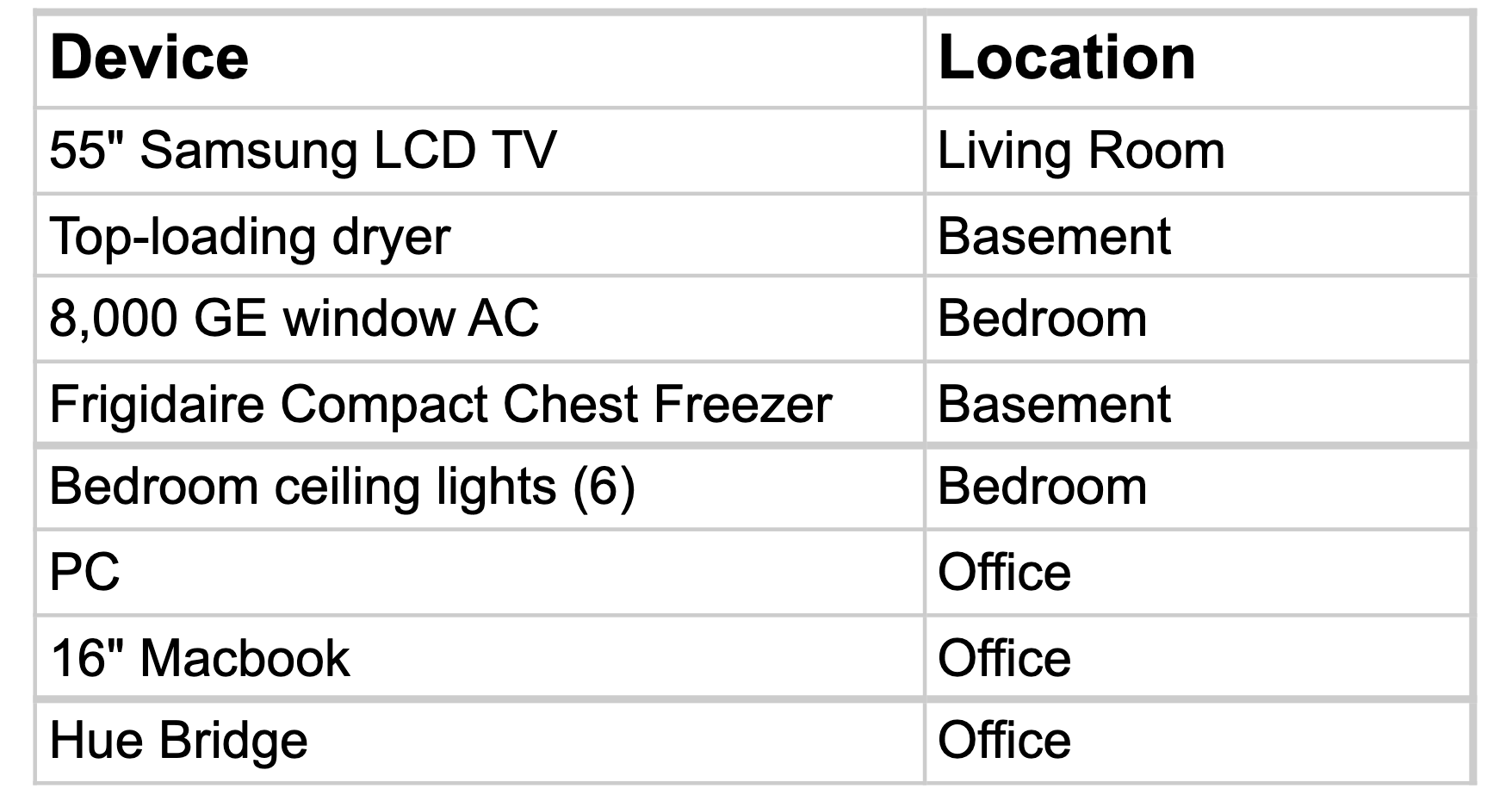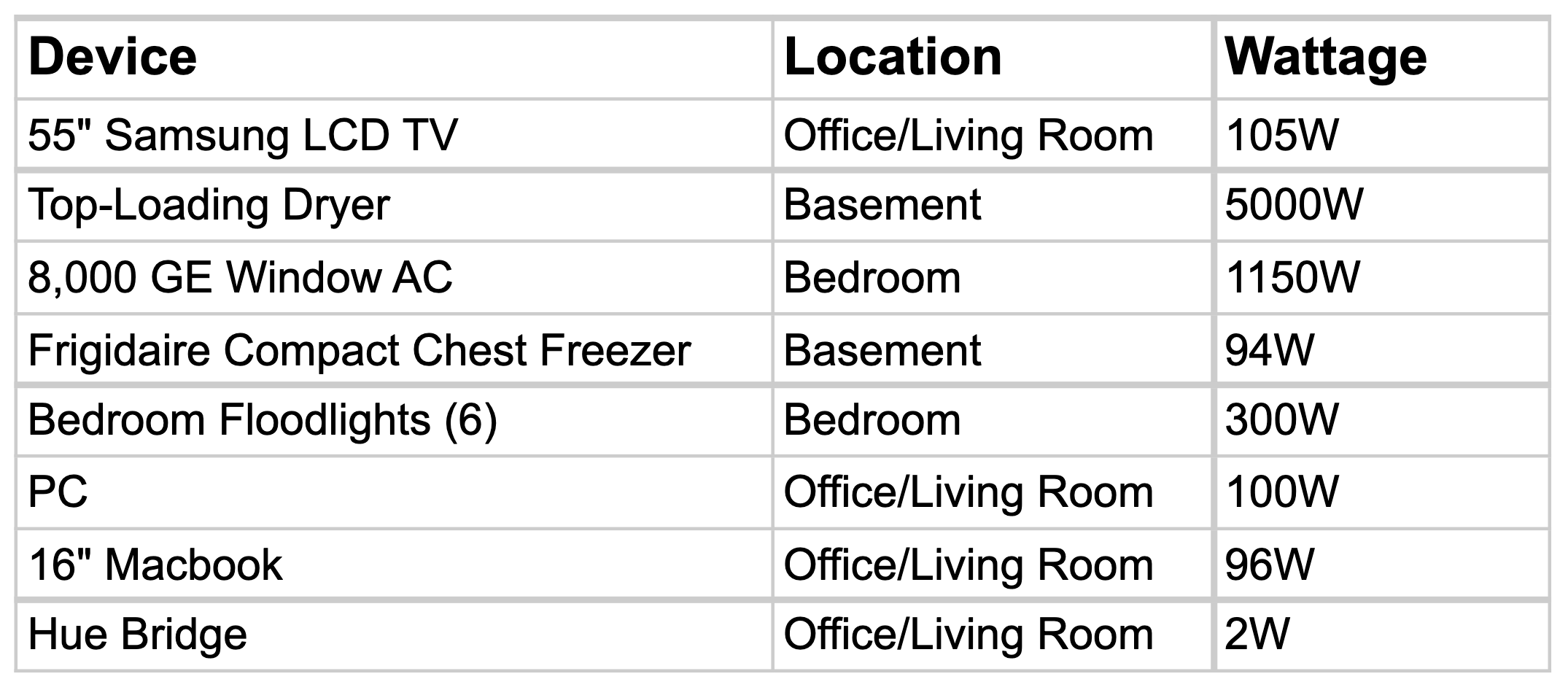Once you’ve completed getting started with Sense and have given it some time to learn your home, you can begin focusing on ways to gather more detailed insights about your home.
After entering your Always On Estimates to get a better idea of the vampire devices inside your home, the next step is to tackle the devices in your home that Sense may not have recognized. With some detective work, you can use Sense to understand some of the undetected devices in your home and leverage our integrations to chip away at your “Other” bubble.
What is the Other bubble?
Other wattage is equal to your total wattage minus the active bubbles (including Always On.) Detected devices — whether devices detected via machine learning, smart plugs, or dedicated circuit sensors — are subtracted from the Other bubble (note that this does not apply to user-added Always On devices.)
You can also think of the “Other” bubble in the Sense Home app as the total wattage that Sense has not identified in your home. So what can you do to reduce it?
- The first step is understanding what devices are currently undetected. Make a list of devices in your home that are undetected by Sense and take special note of any large devices. You can use your home inventory in the Sense Home app to keep track of your devices. You might even want to set up a simple spreadsheet like the one shown below.

- When your home is relatively quiet (few devices are running), you can begin to work through your list of devices to figure out exactly how much energy they’re using. Starting with the suspected energy hogs on your list, go through the devices in your home and watch the live Power Meter (not the Other bubble) as you turn them on or off. For hard-wired devices without a switch, you can flip the breaker off and back on to see how many watts the device uses while on. Record the increase in wattage next to the device on the list. For devices that use varying levels of wattage, you can record the average.

- Once you have a list of your undetected devices and their operating wattage, look for the largest consuming devices.
a) For larger devices like the top-loading dryer, hard-wired devices or devices with variable speed motors, Dedicated Circuit Monitoring enables immediate detection of up to two 120V or 240V circuits with an additional pair of Flex Add-on Sensors. If there are any appliances that are of particular interest to you and haven’t been detected after several months, Dedicated Circuit Monitoring is a good way to identify and track them.
b) If you have lights that are undetected by Sense, using the Hue integration allows additional basic controls of Hue devices in the app and brings all of your Hue devices into the Sense Home app instantaneously. Note: Lights that use under 40W are unlikely to be detected by Sense.
c) For smaller, individual devices like a Chest Freezer or Window AC, the Kasa KP-115 Smart Plug is one of several smart plugs that can track energy and are able to be integrated with Sense. Please note the maximum input specifications for the KP-115.
d) For dense groups of smaller devices (like the office/living room example in our spreadsheet above) the Kasa HS-300 Smart Strip is a great option, allowing you to add up to six devices that integrate with Sense via the smart plug integration.
To have the biggest impact on lowering the devices in your “Other” bubble, consider focusing on the biggest energy hogs first. This will allow you to see the more costly devices in the Sense Home app and gradually fill in the smaller devices over time.
Have you reduced your Other bubble significantly? We’d love to hear about it in the Sense Community!


